Katie Byerly of Cerro Gordo County is also known as Iowa Prairie Girl on YouTube.
The American lotus (Nelumbo lutea) is a big, bold, beautiful aquatic wildflower.
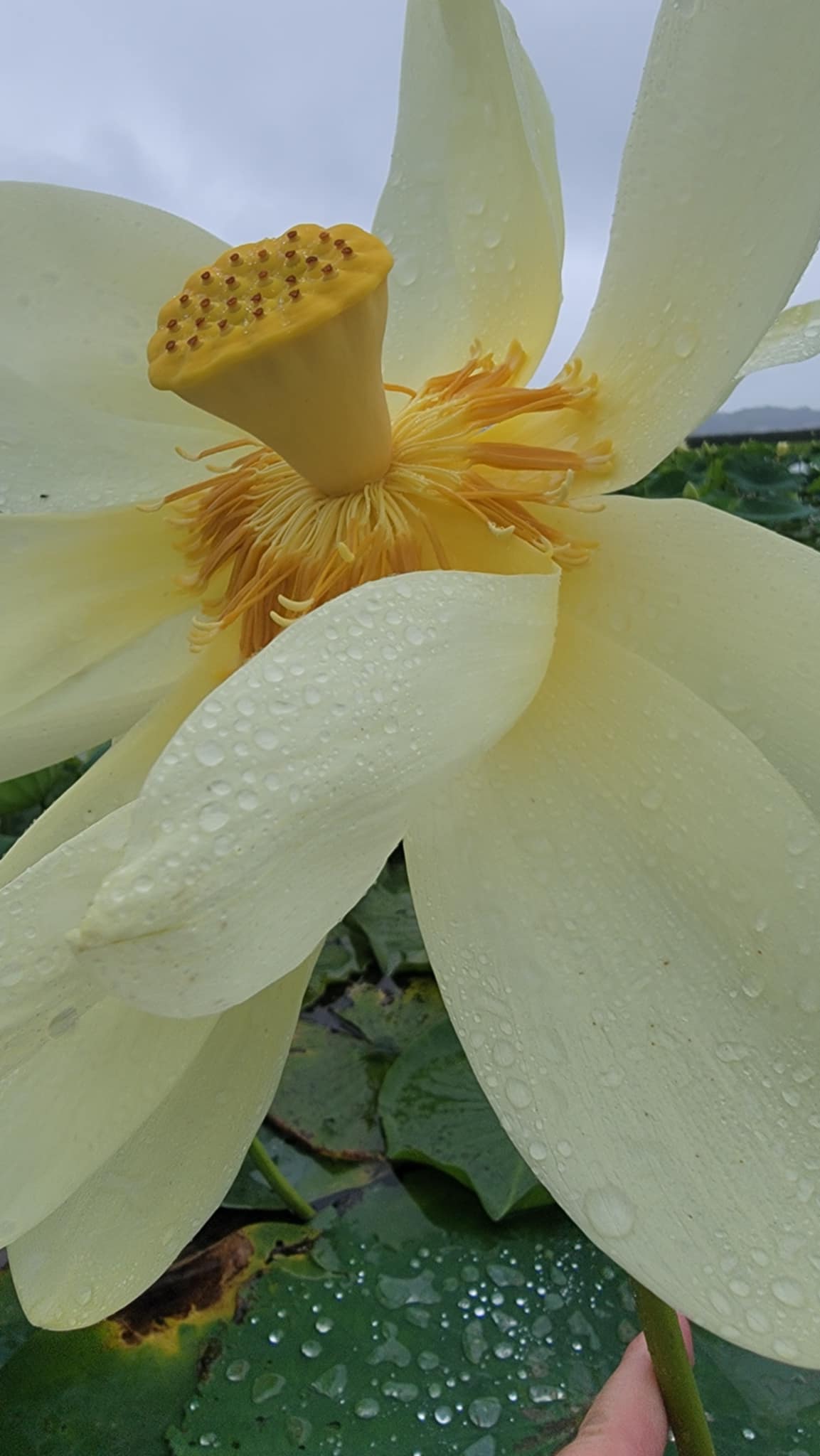
However, like all shallow water dwelling plants, it presents with an inconvenience: accessibility. I have several funny stories of coming home wet and muddy (and sometime shoeless) after hunting marsh-loving wildflowers. Because the American lotus thrives in quiet backwaters of rivers and edges of lakes and ponds, I have considered myself lucky anytime I find one blooming close enough to a dock or water’s edge to snap a picture. Otherwise, up close observations of the plant require a boat or wading.
This July, I kayaked what locals call Kaster’s Cover in Ventura, Iowa. This is the smaller section of Clear Lake on the east side of McIntosh State Park.

Everything about the American lotus is big, including its huge saucer-shaped leaves. Growing up to 2 feet across, these round leaves either float on top of the water or rise out of the water on its sturdy stalk.
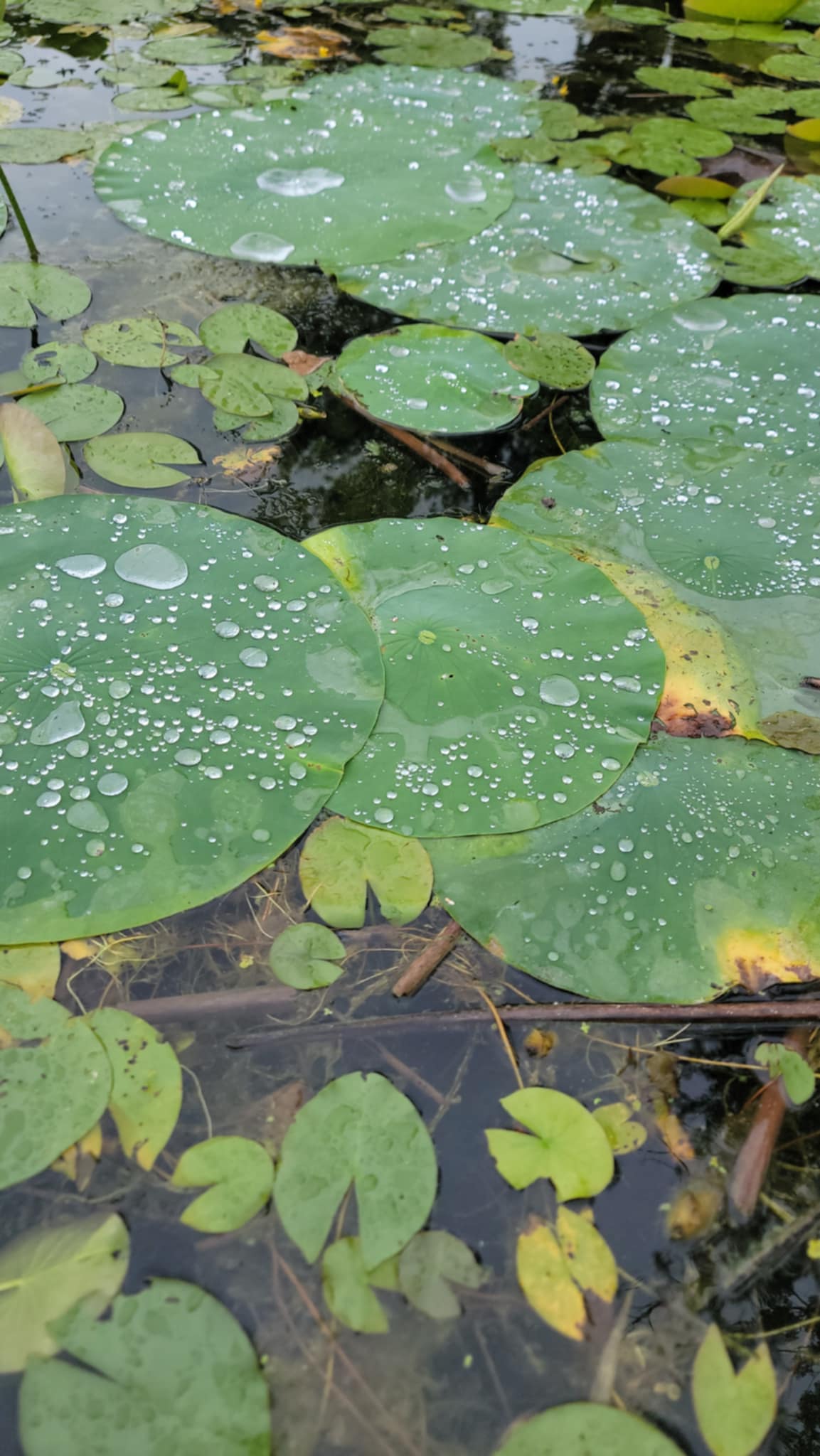

Unlike the American white water-lily, which I wrote about last summer, the lotus leaf does not have a “V” shaped cleft. Rather, it is a complete circle. But like the waterlily, the leaves can form dense colonies. Lily pads provide shelter for fish and frogs, landing pads for insects and birds, and help keep the shallow waters cool on hot summer days. Depending on how you are using the water, some find the large colonies of lily pads troublesome for recreational purposes. I for one found great joy kayaking amongst them.
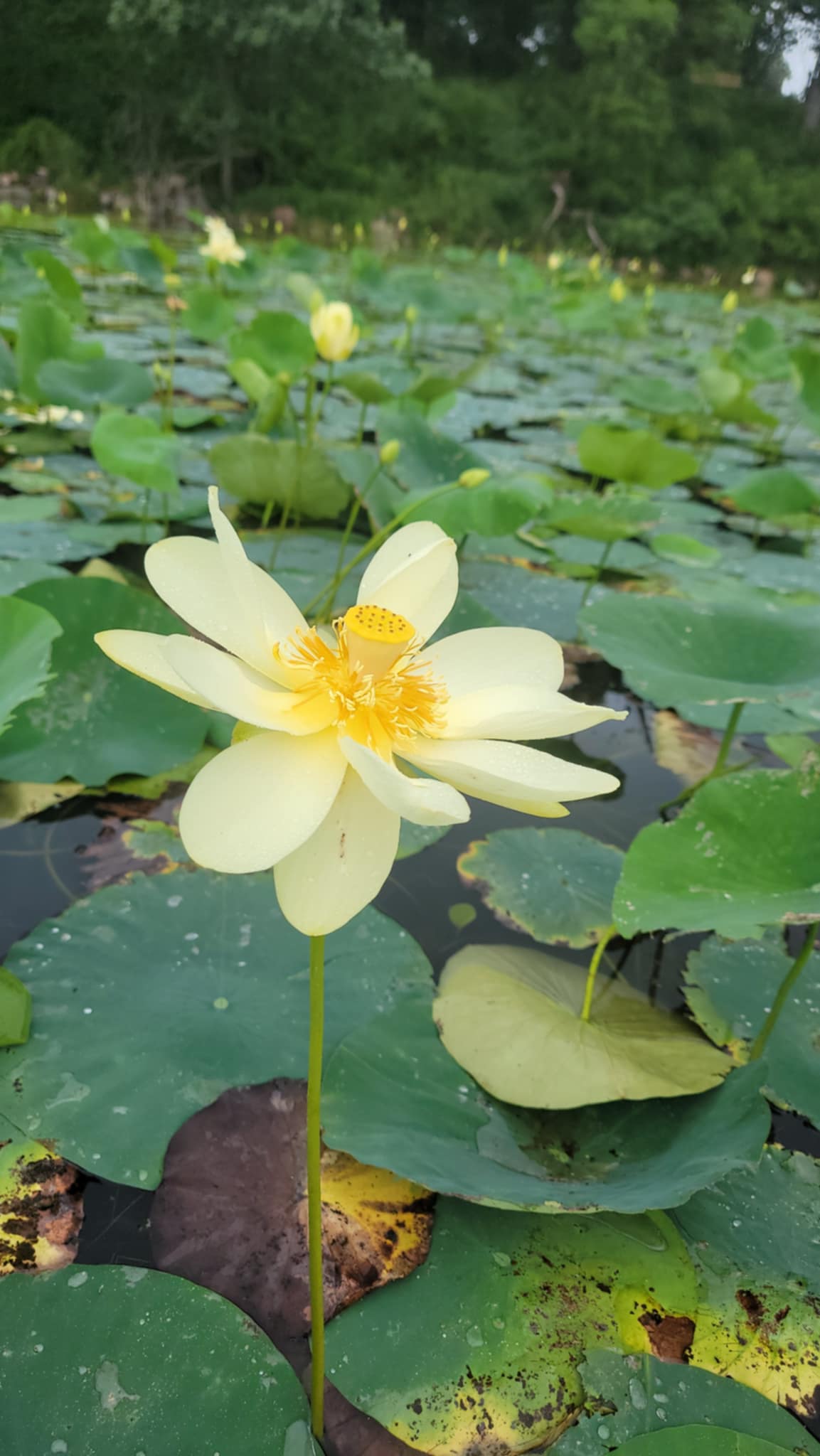

The leaves are waterproof. Small beads to puddles of water sit on top of them. In the July/August 2025 issue of Minnesota Conservation Volunteer, Donna Perleberg writes that “the lotus’s waterproof leaves inspired scientists to develop coatings like Gore-Tex.”
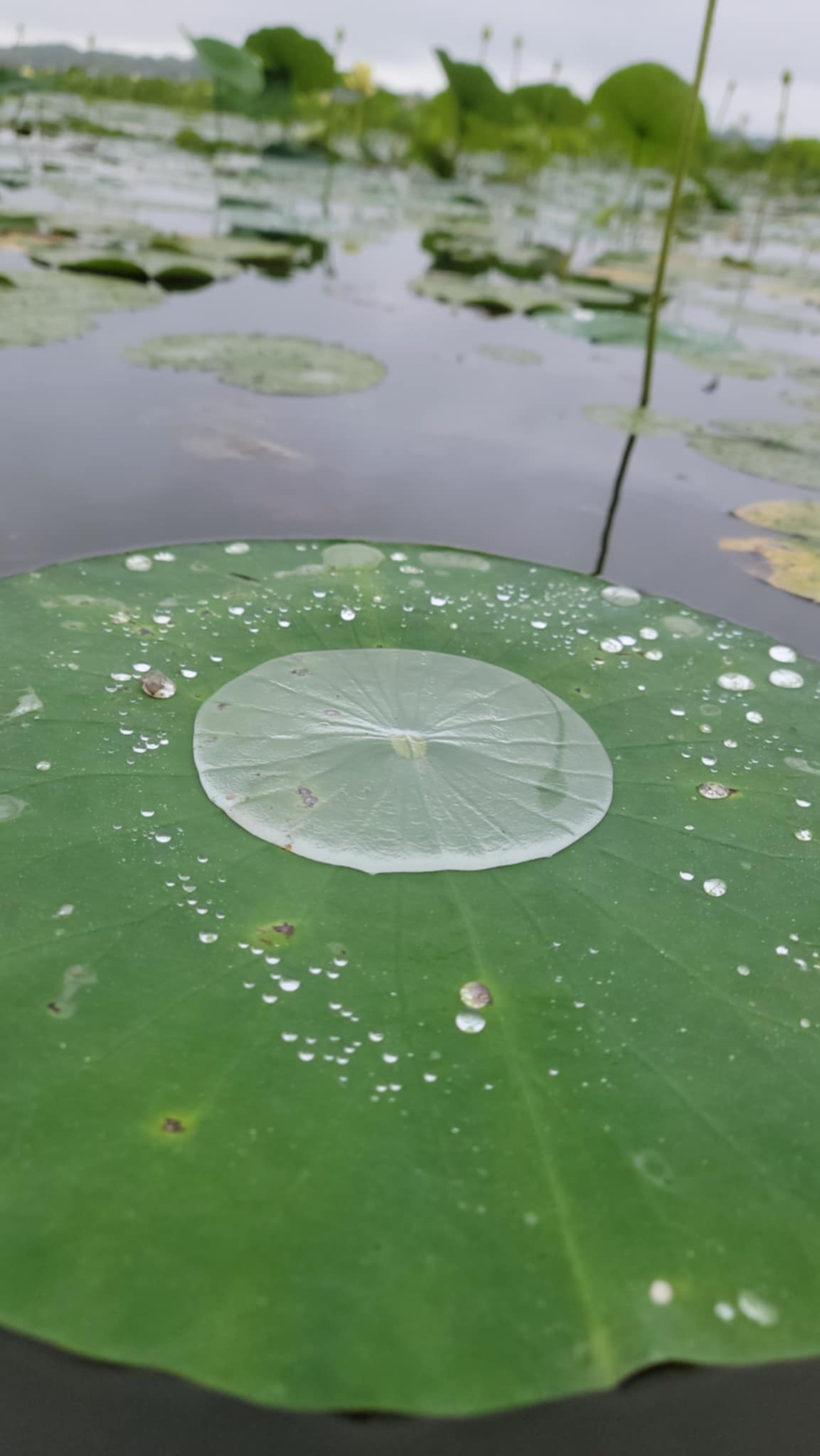
Sometimes in the wind the leaves fold up and form a funnel. The water rolls around in the leaf like an amusement park ride. I captured a water bead doing just that in this video.
Photo showing the same phenomenon:
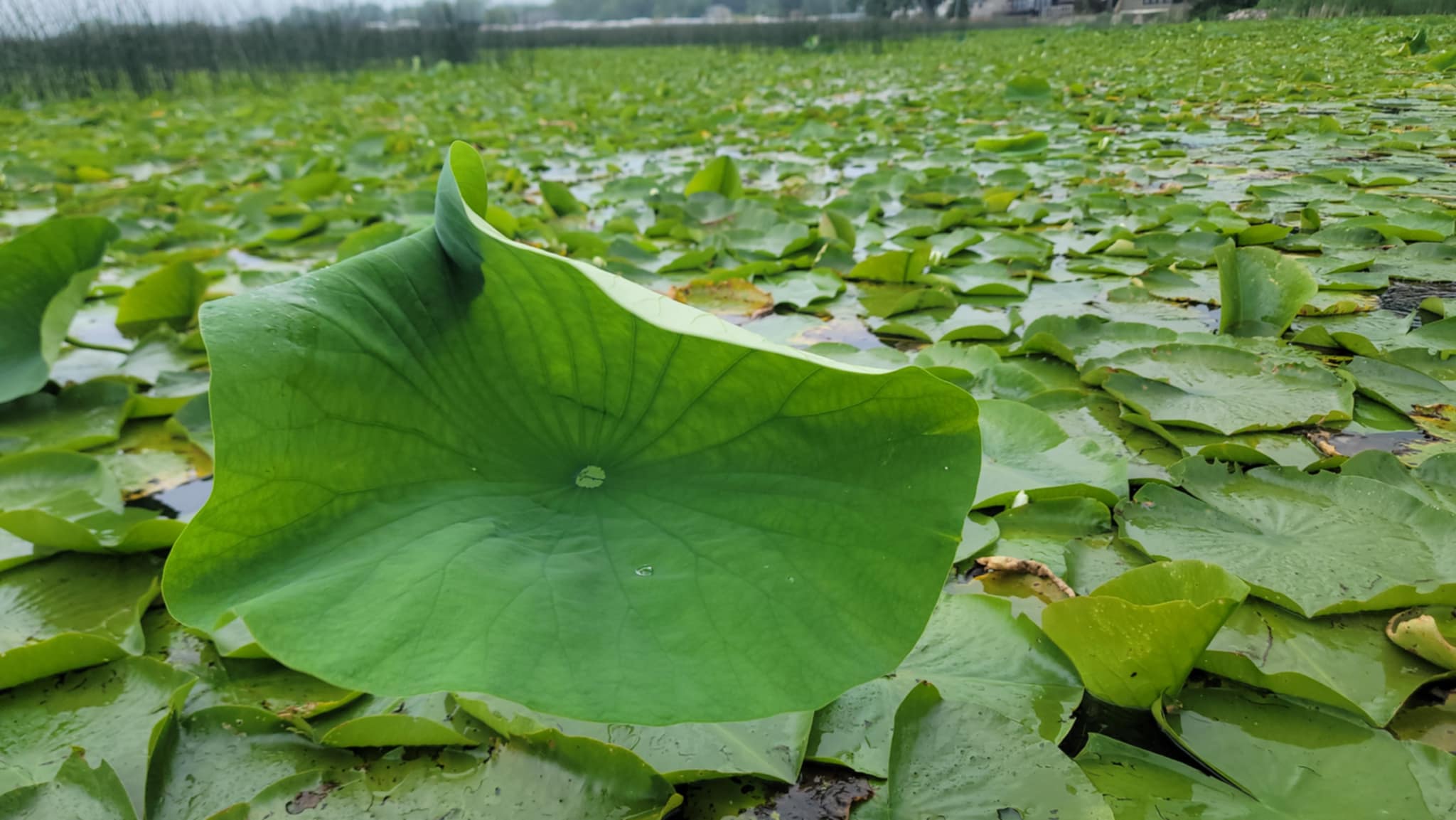
The American lotus rootstock is a horizontal rhizome rooted in the mud. It is roughly 1/3 to 1/4 inch in diameter and can grow to the length of 50 feet. From these underwater tubers, a solitary flower rises. The long, strong stalk raises the flower 1/2 to 3 feet above the water. This image captures a flower bud and leaf both before they open.
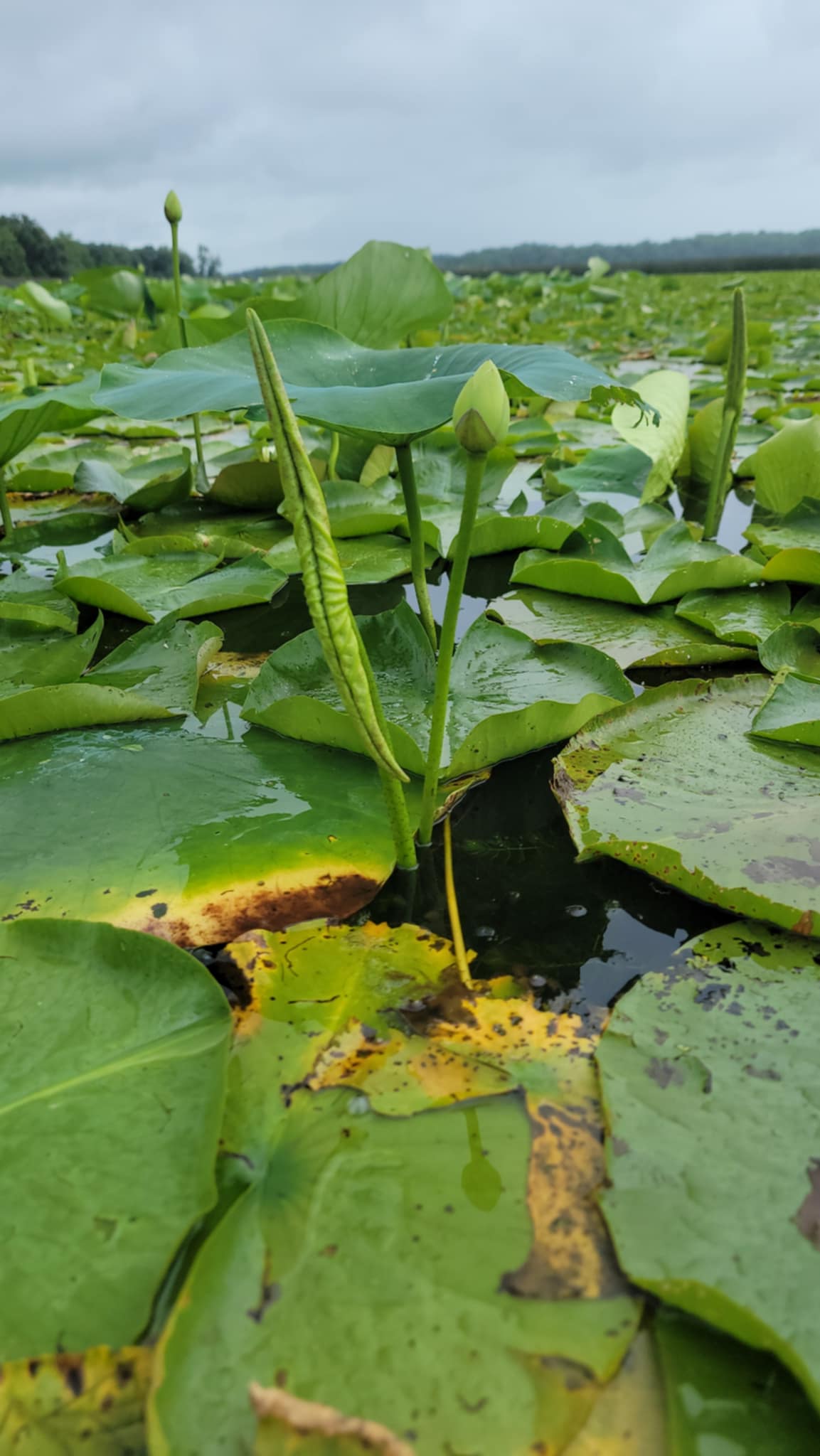
The sepals and petals of the American lotus are similar and are called tepals. The outer tepals are a lovely light green to pale yellow.
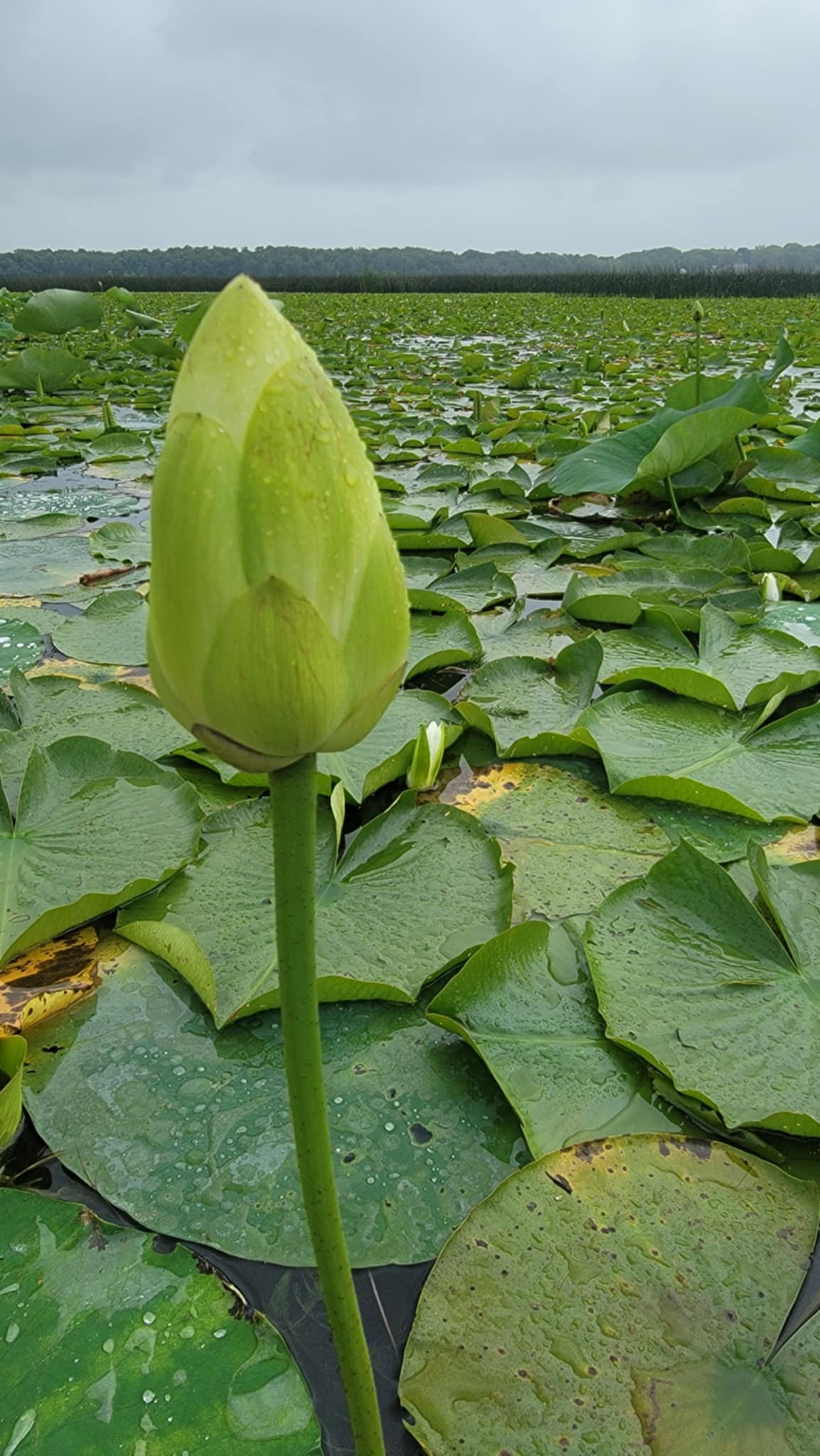
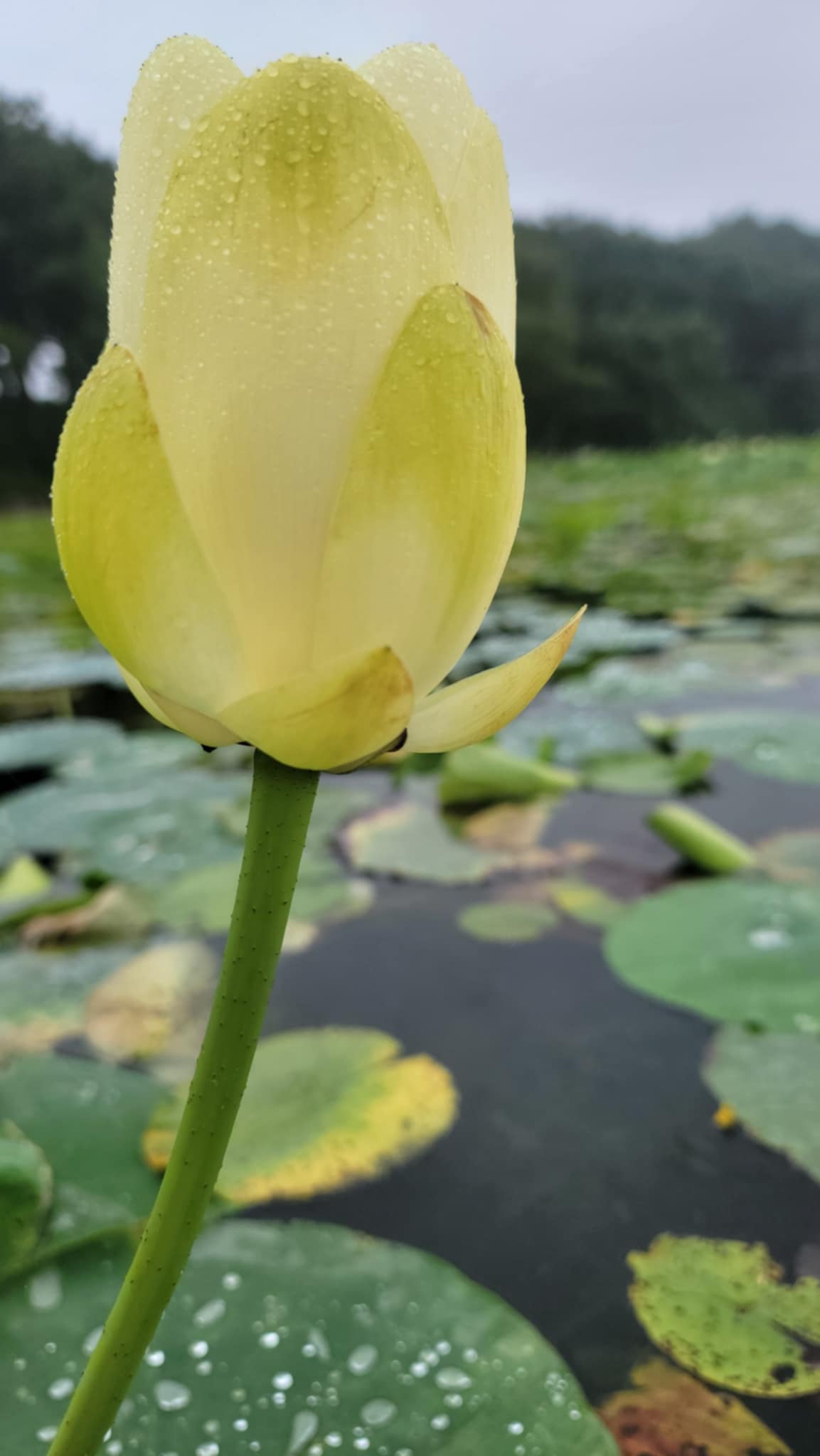
When this large flower bud opens, the pale yellow to white inner tepals—there are around ten to 20—unfold into a big, bold, beautiful flower. The American lotus flower head can be 10 inches across.
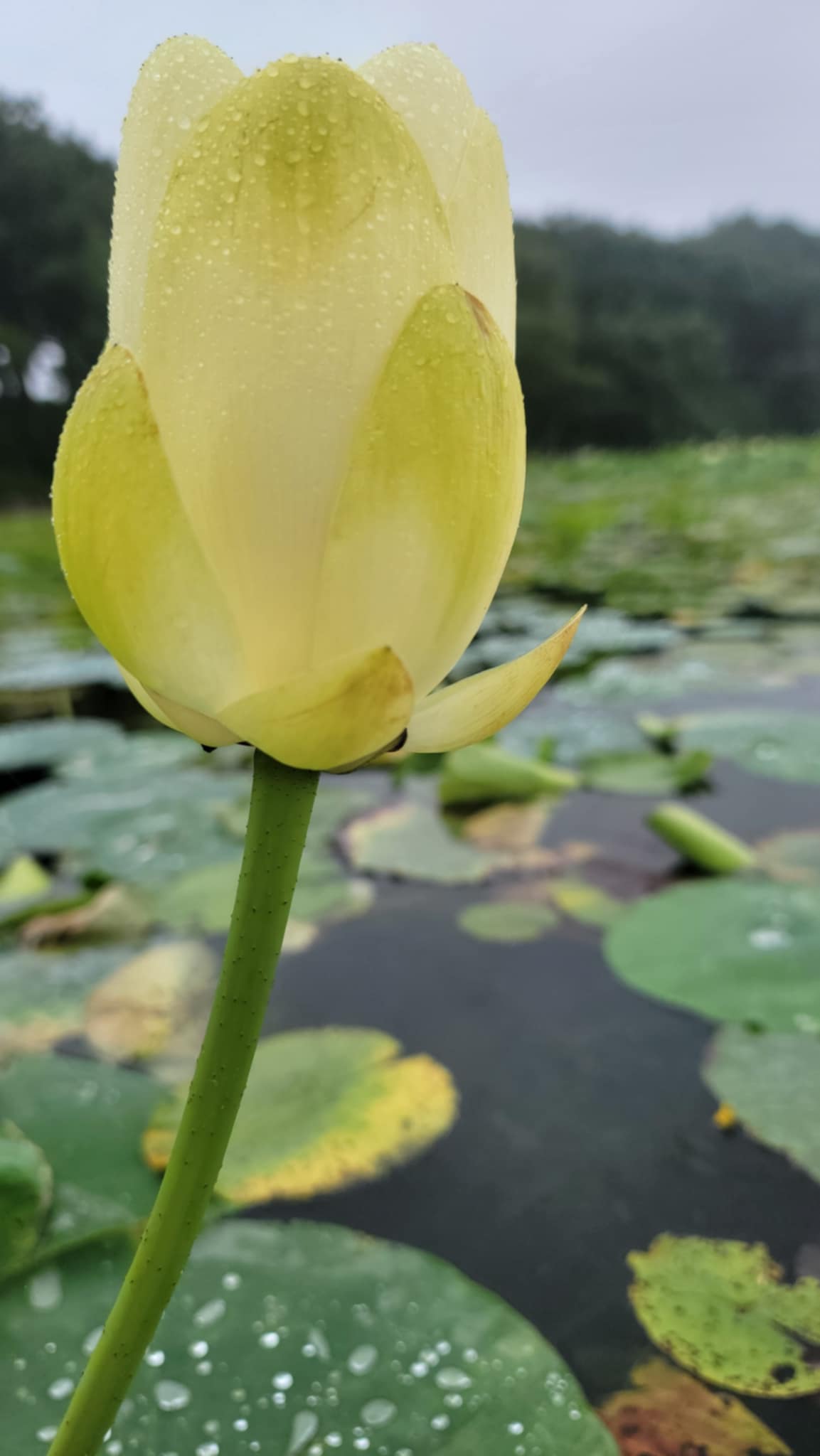
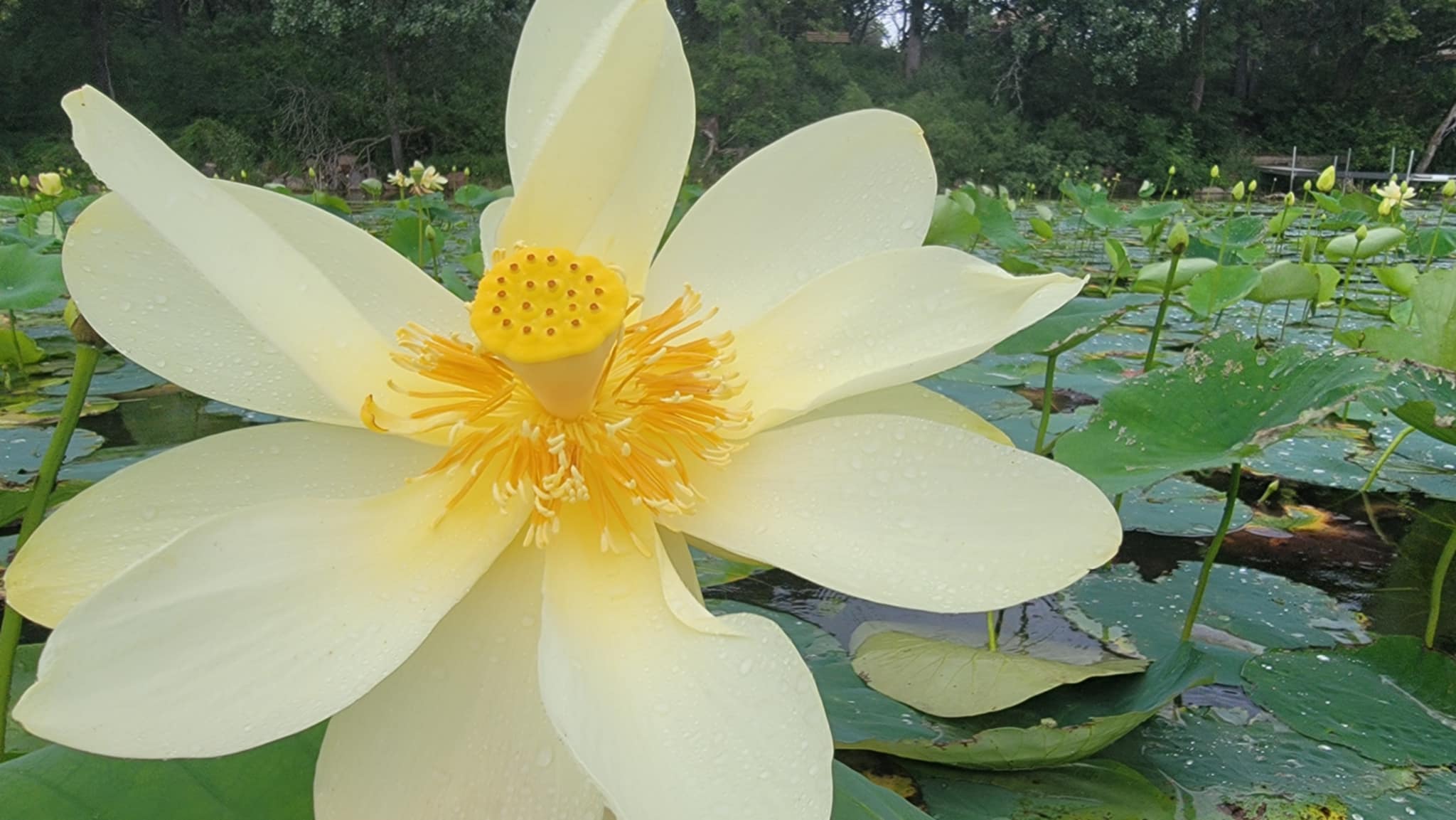
Just like everything else on the American lotus, the bright orange-yellow stamens are large and numerous. They surround a cone-shaped pitted receptacle.
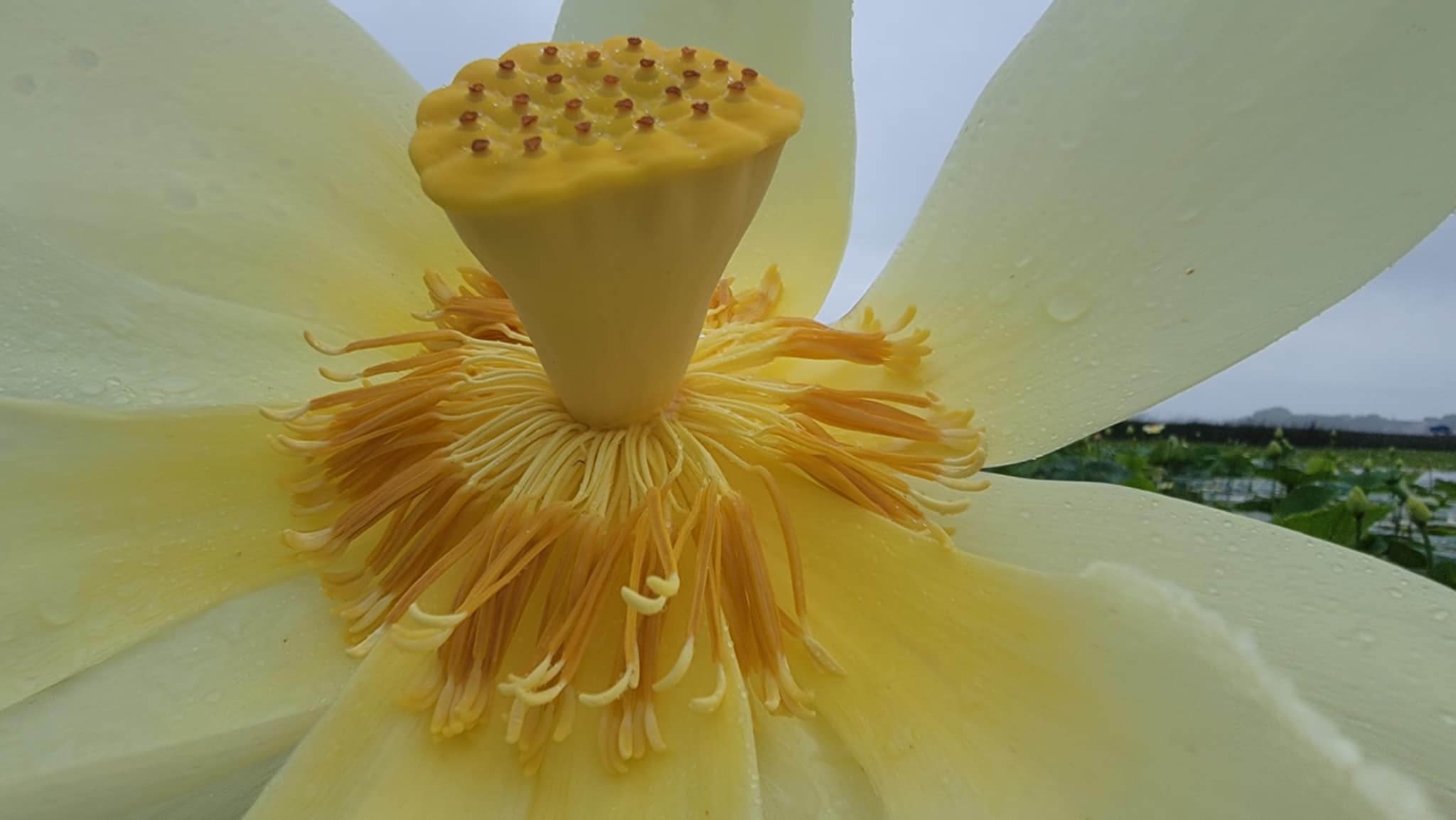
The flowers open during the day and close at night. A flower typically blooms for three to five days; then the petals start to fall off, often landing on floating leaves.
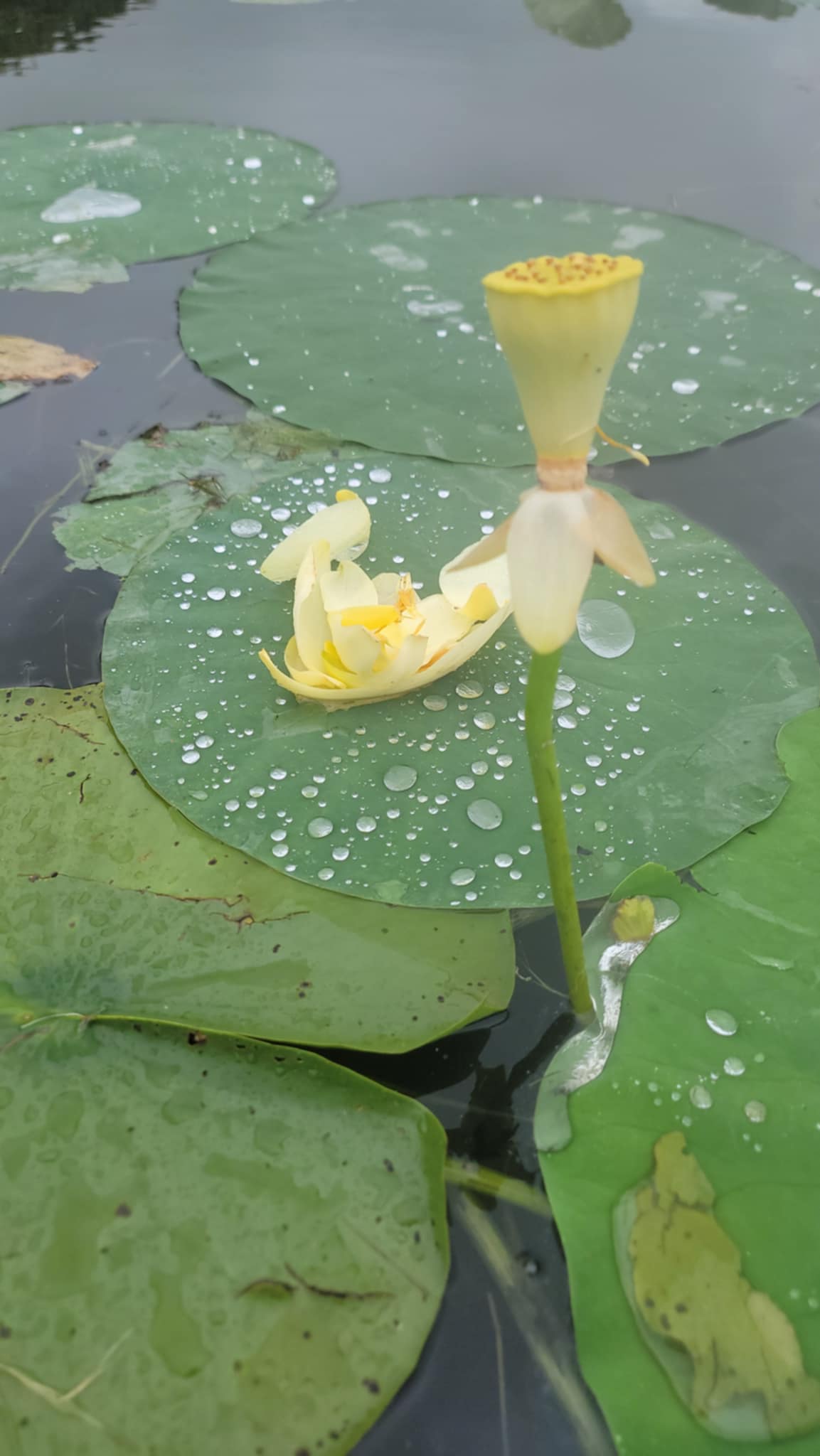
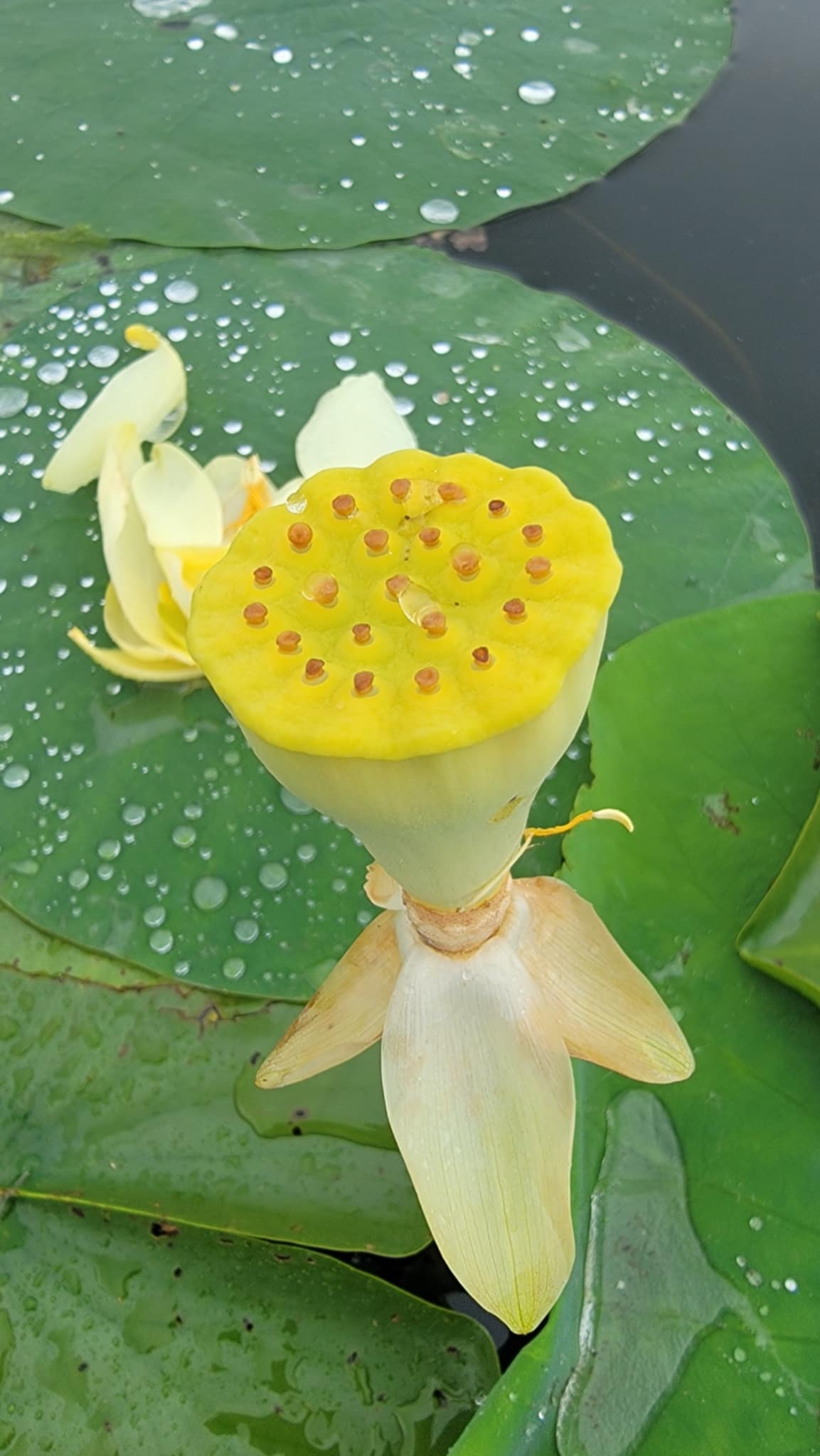
At the end of the bloom and as the seeds begin to develop, the receptacle (shaped like a showerhead) dries and expands. It will become 3-6 inches wide and woody. Each receptacle has 25-30 nuts. As the plant decomposes, the receptacle bends towards the water and the seeds drop and sink to the muddy lake bottom. In September of 2021, I found drying seed heads at Lake Wapello.
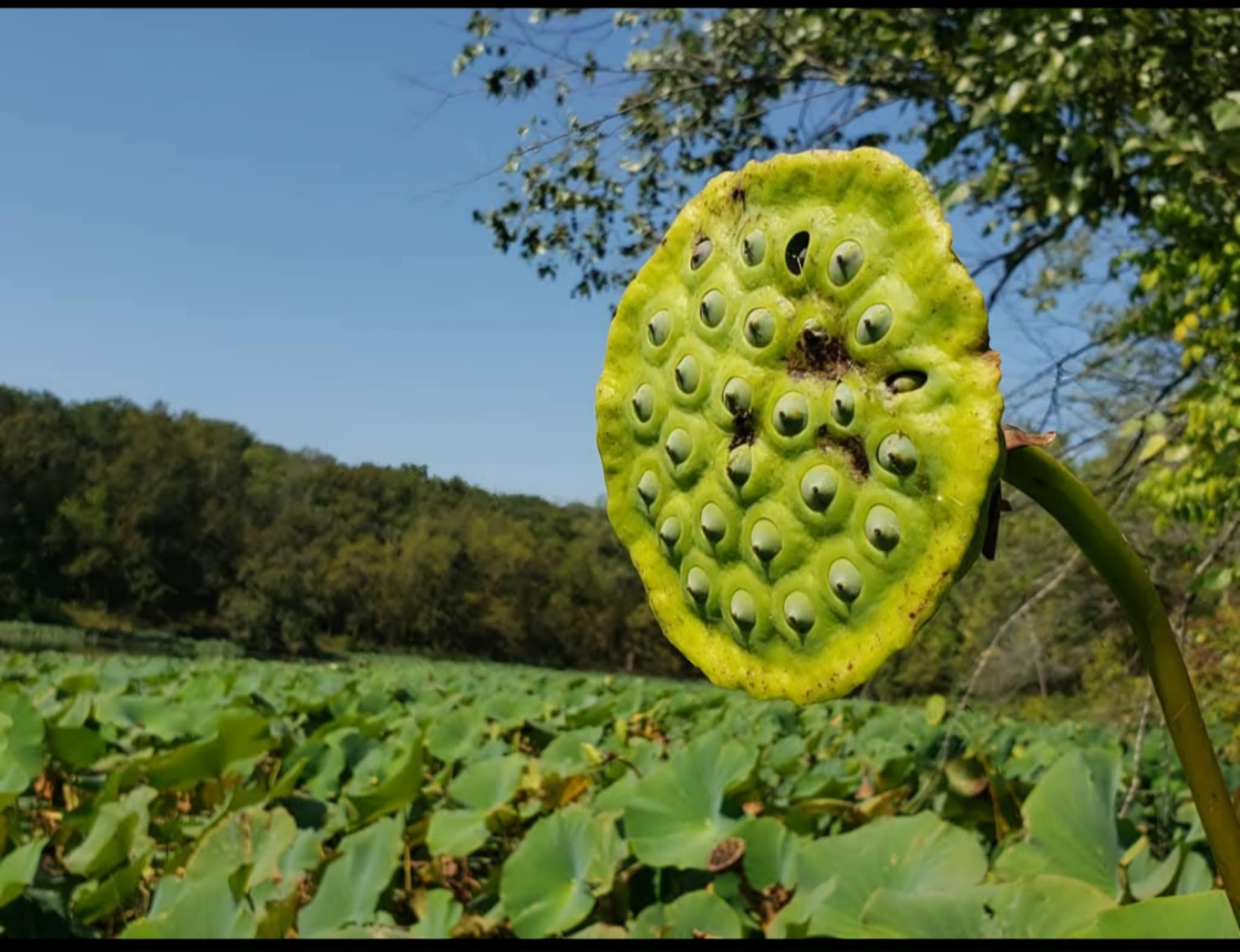
An article is not complete without a reference to a Sylvan Runkel and Dean Roosa’s wildflower guide, Wildflowers and Other Plants of Iowa Wetlands. In their guide, we learn that the seeds and tubers of the American lotus are edible for birds, animals, and humans. It was an important food for some American Indians.
“Lotus” symbolizes strength, purity, rebirth, and resilience as it emerges yearly from the muddy river and lake bottoms. Paddling amongst a colony of American lotus, I believe I experienced this.
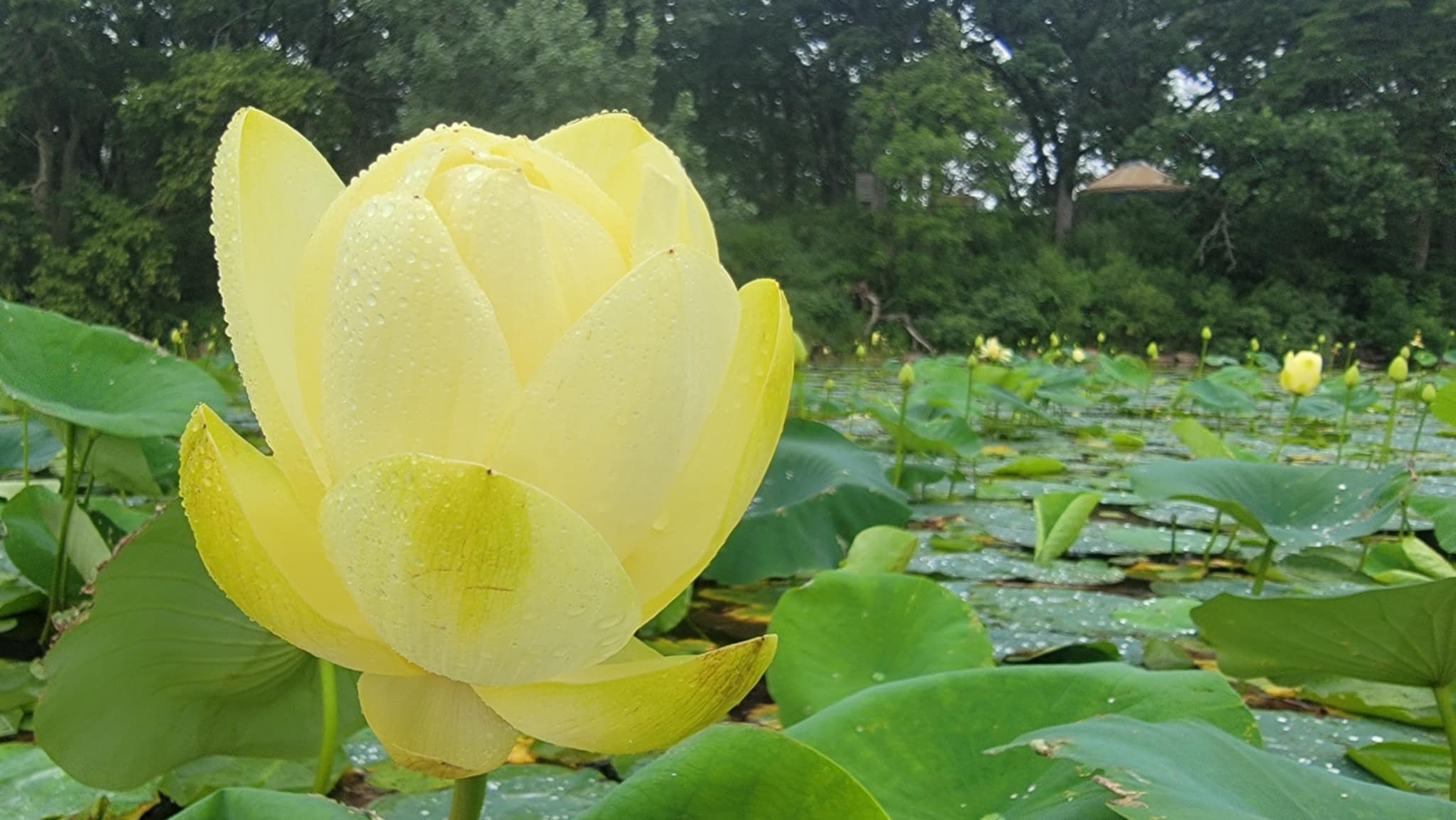
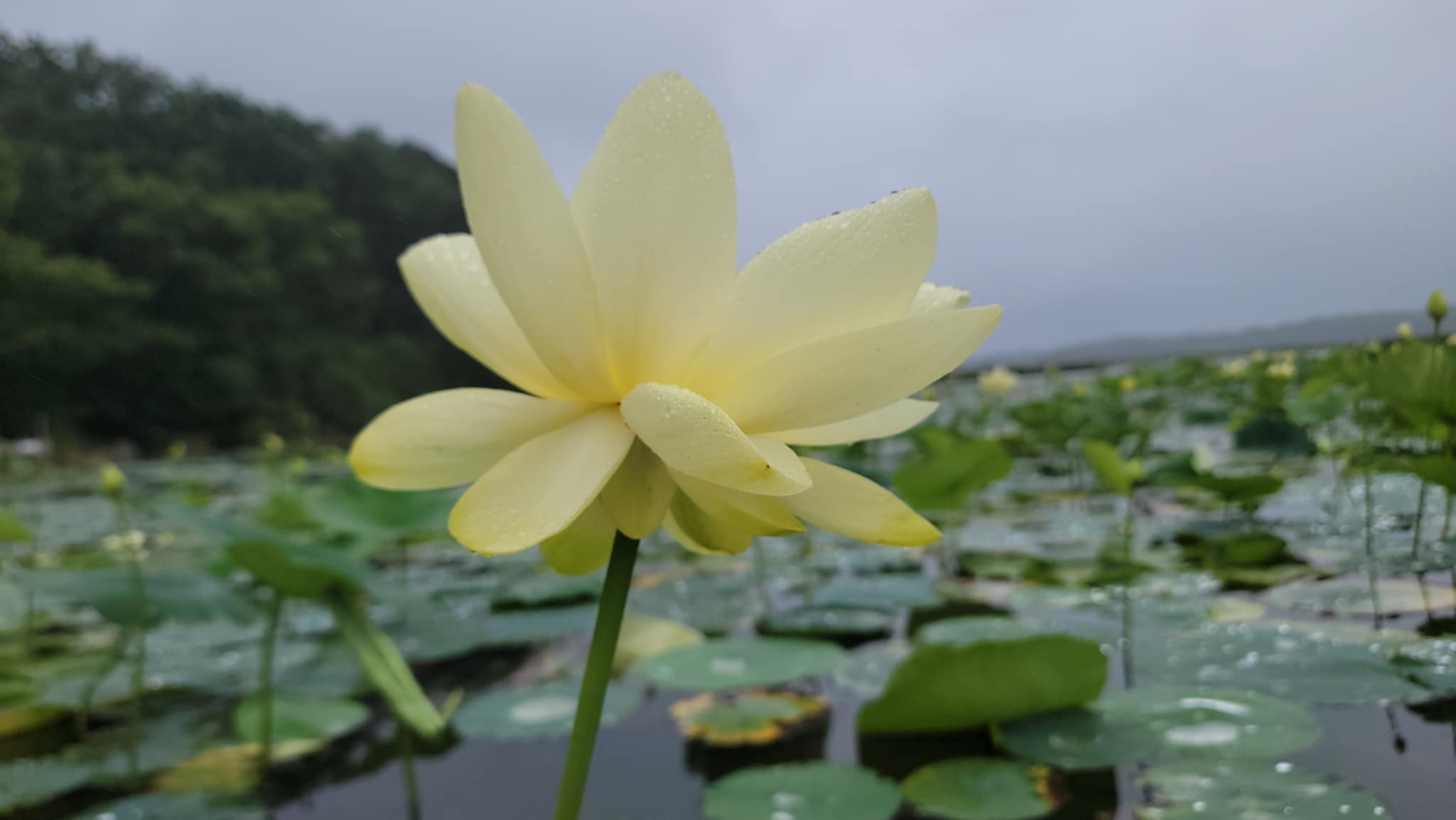
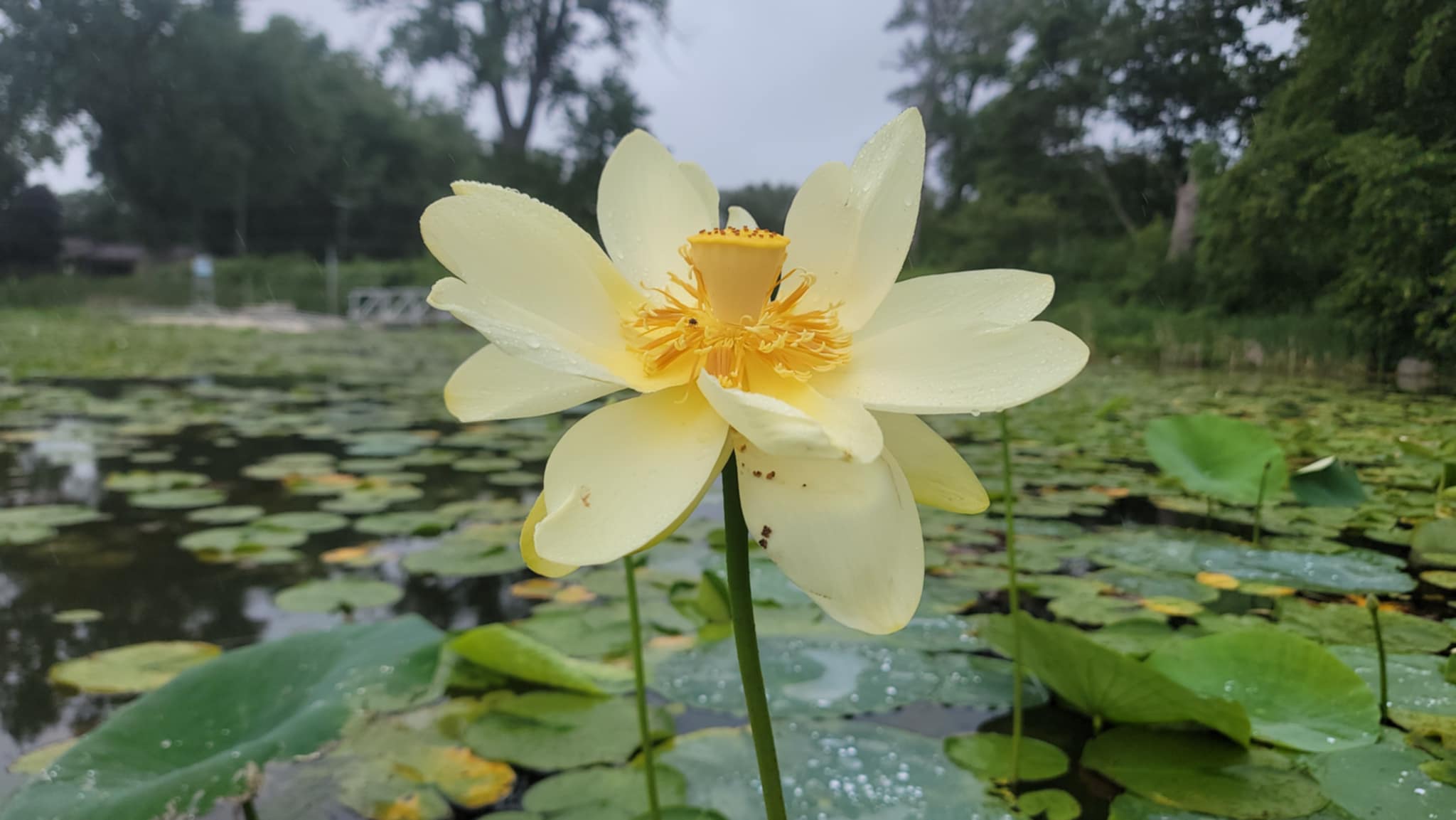

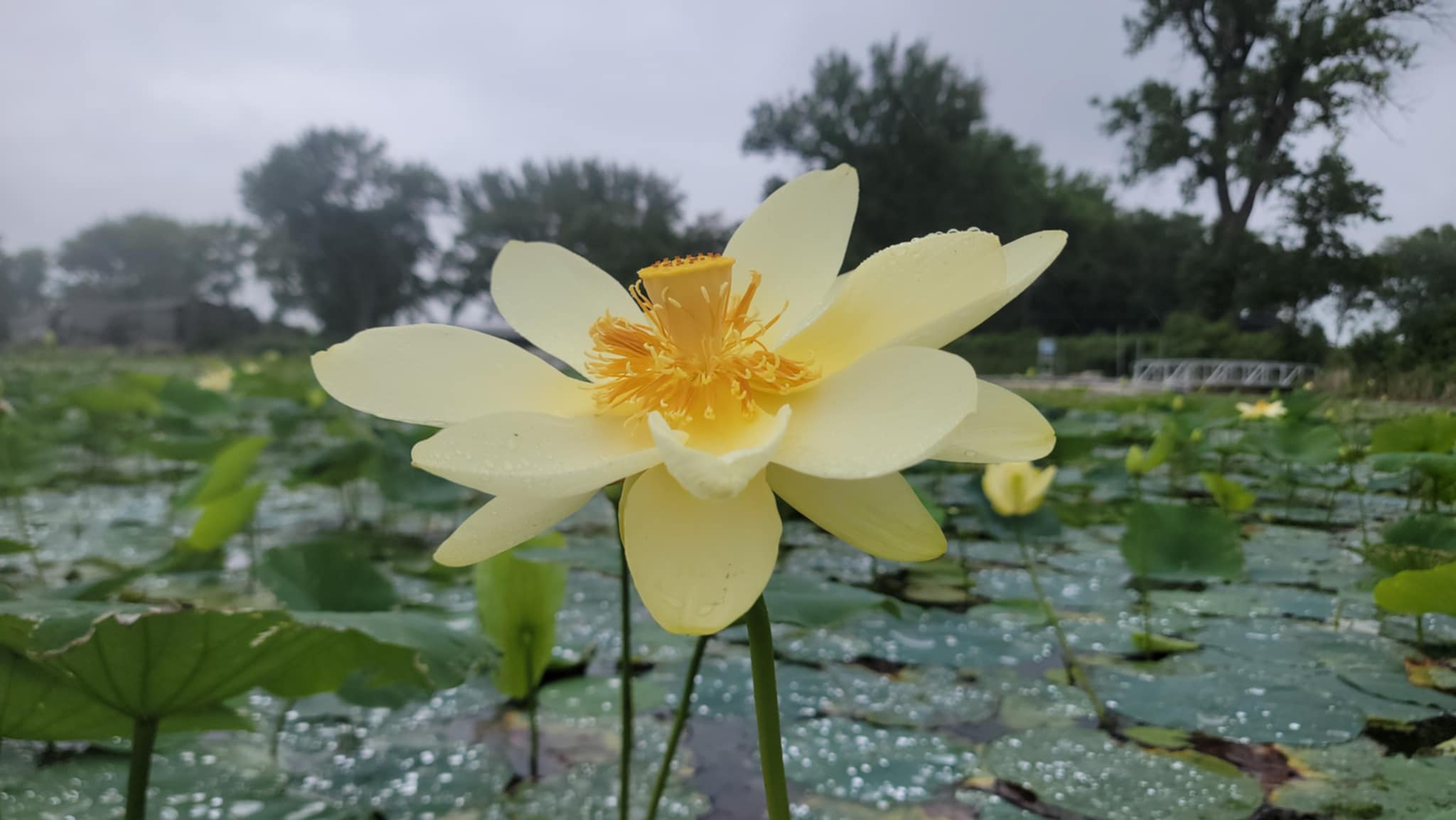
1 Comment
Thanks for sharing, Katie Byerly
What a truly wonderful place to paddle in. I wish Iowa had much more of our original huge wealth of wetlands. Not only would we have more colonies of American lotus, but our water would be cleaner.
PrairieFan Mon 4 Aug 12:41 PM